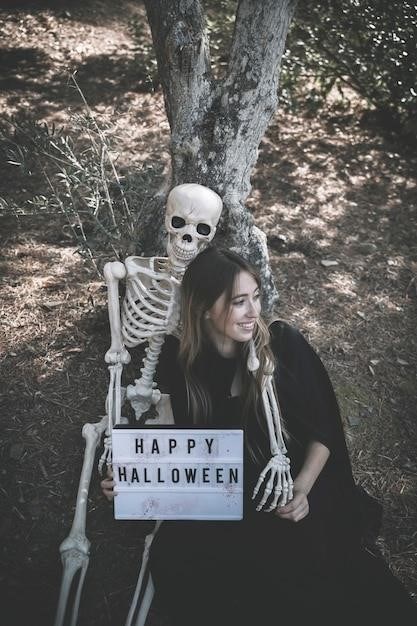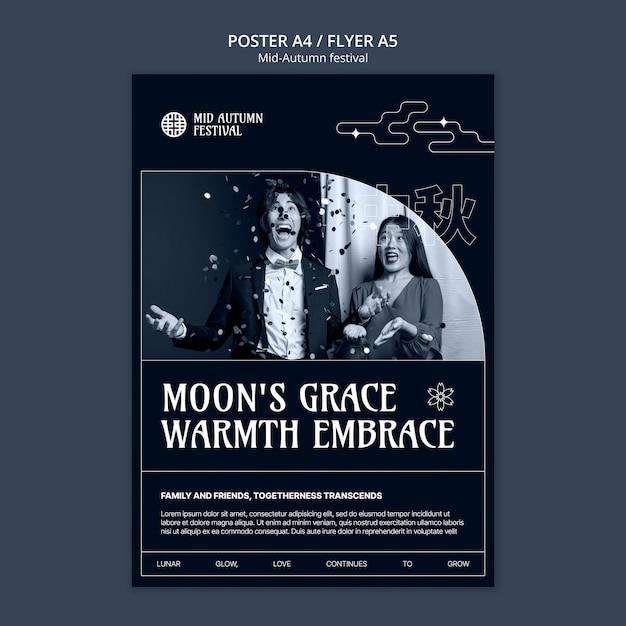Because I Could Not Stop for Death⁚ A Detailed Analysis
Emily Dickinson’s renowned poem, “Because I could not stop for Death,” is a profound meditation on mortality and the afterlife. The poem explores themes of personal confrontation with death, the uncertainty of what lies beyond, and the speaker’s acceptance of their inevitable fate. Through vivid imagery and personification, Dickinson crafts a powerful and moving portrayal of the journey towards death and the speaker’s encounter with the ultimate unknown.
The Poem’s Narrative
Dickinson’s “Because I could not stop for Death” unfolds as a surreal and symbolic journey, presented through the lens of a speaker who encounters Death personified. The poem narrates a carriage ride taken by the speaker, Death, and Immortality. This unusual trio embarks on a slow and deliberate journey, passing through various stages of life, from childhood innocence represented by the “school” to the “fields of gazing grain” symbolizing maturity and the “setting sun” representing the final moments before death. This journey, while seemingly mundane, is imbued with deep symbolic meaning, representing the speaker’s transition from life to death and the acceptance of their inevitable fate. The poem’s narrative, though unconventional, is undeniably powerful in its depiction of the speaker’s gradual acceptance of death, not as a terrifying end, but as a natural progression of life.
Personification of Death
Dickinson’s masterful use of personification is central to the poem’s impact. Death, instead of being a grim reaper or a terrifying specter, is portrayed as a courteous and gentle gentleman. He “kindly stopped” for the speaker, inviting her on a journey in his carriage. This unexpected portrayal of Death as a companion rather than a harbinger of doom humanizes the concept of death, making it less frightening and more relatable. The slow pace of their journey further reinforces this gentle depiction, as Death “knew no haste” and allowed the speaker to observe the passing scenery, suggesting a peaceful and contemplative transition into the afterlife. The personification of Death, therefore, serves not only to make the concept of death less terrifying but also to emphasize the speaker’s acceptance and even anticipation of this inevitable part of life.
The Journey’s Significance
The carriage ride with Death is not simply a physical journey; it represents a symbolic passage through the stages of life and into the afterlife. The speaker observes “the Houses that were built / Of Sunlight” and “the Fields of Gazing Grain,” suggesting a progression through the phases of life, from childhood innocence to adulthood and maturity. The landscape gradually transforms into “the Setting Sun” and “the Woods of Weeping,” symbolizing the approaching end of life and the inevitability of death. The journey’s destination is the speaker’s grave, highlighting the finality of death, yet the slow and deliberate pace of the ride suggests a peaceful acceptance of this inevitable outcome. The journey, therefore, serves as a meditation on the cyclical nature of life and death, culminating in a sense of quiet resignation and acceptance of mortality.
Themes of Mortality and the Afterlife
The poem explores the complex relationship between mortality and the afterlife, presenting both the inevitability of death and the uncertainty surrounding what comes after. The speaker’s encounter with Death is not one of fear or terror but rather a quiet acceptance of the natural order of life and death. The journey itself signifies a passage from the world of the living to the realm of the dead, a transition that is depicted as both serene and inevitable. The poem’s ending, “We passed the Setting Sun / Or rather – He passed Us – / The Dews drew quivering / And Chill – for only Gossamer / My Gown – my Tippet – Only Tulle – / We paused before a House / That looked a Kindred of the Sun – / And then a Covenant I sealed / With him That drew me Unto His –,” leaves the reader with a sense of ambiguity. The afterlife is not described in concrete detail, leaving room for individual interpretation and reflection on the unknown. The poem, therefore, invites readers to confront their own mortality and contemplate the mysteries of the afterlife.
Imagery and Symbolism
Dickinson’s masterful use of imagery and symbolism further enhances the poem’s depth and meaning. The carriage ride, a recurring motif in Dickinson’s work, serves as a powerful symbol of the journey of life and the inevitable arrival of death. The slow and deliberate pace of the journey, emphasized by the line “He knew no haste,” suggests the gradual and inevitable nature of death. The passing landscape, from the “Setting Sun” to the “House” that “looked a Kindred of the Sun,” symbolizes the stages of life and the transition to the afterlife. The “Dews” and “Chill” that “draw quivering” represent the coldness and stillness of death. The speaker’s attire, “Gossamer… Gown – my Tippet – Only Tulle,” underscores the fragility and impermanence of human life. The “Covenant” sealed with Death at the end of the poem suggests an acceptance of one’s fate and a sense of peace in the face of mortality. These rich images and symbols work together to create a haunting and evocative portrait of death’s arrival and the speaker’s journey towards the unknown.

Dickinson’s Perspective on Death
Dickinson’s poem offers a unique and nuanced perspective on death, defying conventional notions of fear and dread. Rather than portraying death as a terrifying reaper, she personifies it as a courteous gentleman who “kindly stopped” for the speaker. This gentle and respectful portrayal suggests a sense of acceptance and even a degree of comfort in the face of mortality. The speaker’s willingness to embark on the journey with Death implies a sense of resignation to fate and a willingness to embrace the unknown. Dickinson’s perspective challenges the traditional view of death as a negative and unwelcome event, instead suggesting a sense of inevitability and even a possible transition to a new state of being. The poem’s final lines, “We paused before a House that seemed / A Kindred of the Sun,” hint at a possibility of a peaceful and even welcoming afterlife, further emphasizing Dickinson’s unconventional and perhaps even optimistic view of death.
Critical Interpretations
Critical interpretations of “Because I could not stop for Death” have explored various aspects of the poem, ranging from its exploration of mortality and the afterlife to its use of symbolism and imagery. Some critics have focused on the poem’s depiction of Death as a gentle and courteous figure, suggesting that Dickinson was attempting to demystify and humanize the concept of death. Others have analyzed the poem’s allegorical journey, interpreting the stages of the ride as representing the different stages of life, culminating in the speaker’s arrival at their final destination. The poem’s use of symbolism, particularly the imagery of the carriage and the “House that seemed / A Kindred of the Sun,” has also been the subject of much scholarly debate, with critics offering various interpretations of their meaning and significance. Ultimately, the poem’s enduring popularity and its ability to evoke a wide range of responses from readers speaks to the power and complexity of Dickinson’s exploration of the universal themes of mortality and the afterlife.
The Poem’s Legacy
“Because I could not stop for Death” has left an indelible mark on American literature, solidifying its place as one of Emily Dickinson’s most celebrated and enduring works. Its profound exploration of mortality and the afterlife has resonated with readers across generations, sparking countless discussions and interpretations. The poem’s unique combination of vivid imagery, symbolic language, and profound philosophical inquiries has made it a staple in classrooms and literary anthologies. It has been analyzed by scholars, adapted by artists, and referenced in popular culture, further cementing its status as a literary touchstone. The poem’s legacy extends beyond its thematic depth and artistic merit, inspiring a sense of contemplation and acceptance of life’s inevitable end. “Because I could not stop for Death” continues to be a powerful and relevant work that invites readers to confront their own mortality and ponder the mysteries that lie beyond the veil of death.
“Because I could not stop for Death” stands as a testament to Emily Dickinson’s unique poetic genius, her ability to grapple with profound existential questions in a language both accessible and profound. The poem’s enduring legacy lies in its universal themes of mortality, the afterlife, and the human condition. Dickinson’s masterful use of personification, imagery, and symbolism allows readers to engage with the complex realities of death in a way that is both thought-provoking and emotionally resonant. Through its exploration of the speaker’s acceptance of death’s inevitability and the uncertainties of the afterlife, “Because I could not stop for Death” continues to provoke contemplation and inspire awe in readers centuries after its creation. Its powerful and moving portrayal of the journey towards death and the speaker’s encounter with the ultimate unknown remains a timeless masterpiece, forever etching itself in the annals of American literature.









